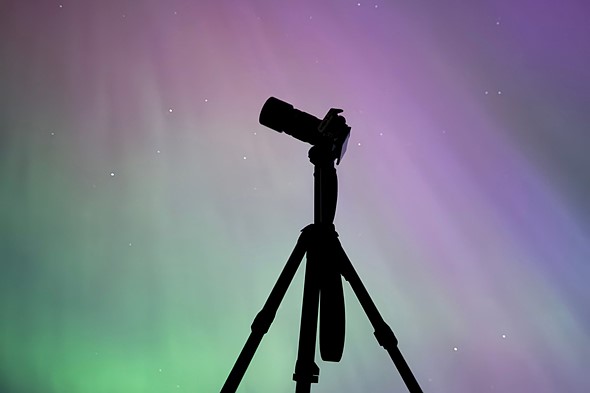Show off your best astronomy photos in the Astronomy Photographer of the Year contest
 |
| Photo: Mitchell Clark |
Astronomy photographers, your time to shine is here. The 2025 Astronomy Photographer of the Year contest is now open for entries, giving you the opportunity to submit your favorite images of the night sky. The contest is hosted by the Royal Observatory, Greenwich and seeks to highlight epic space photography. Participants have the chance to win cash prizes, the chance to have their image displayed in an exhibition at the National Maritime Museum and a year’s subscription to BBC Sky at Night Magazine. Entries are open until March 3, 2025, at noon GMT.
The contest includes eight categories for adults (anyone 16 and older). While some categories require powerful magnification, others focus on the night sky more broadly, so you don’t need a powerful telescope to participate. A separate Young Competition is open to those 15 and younger. The Young Competition is completely open and has no individual categories.
The Astronomy Photographer of the Year website defines the adult categories as the following:
- Aurorae: Photographs featuring the northern and southern lights (Aurora Borealis and Aurora Australis)
- Galaxies: Photographs of deep-space objects beyond the Milky Way galaxy, including galaxies, galaxy clusters and stellar associations
- Our Moon: Photographs of the Moon, including lunar eclipses and the occultation of stars and planets. Images of the Moon alongside earthly scenery may also be entered into this category, or into Skyscapes
- Our Sun: Photographs of the Sun, including solar eclipses and transits. Images of the Sun alongside earthly scenery may also be entered into this category, or into Skyscapes
- People and Space: Photographs of the night sky that include people or elements that show the presence or influence of human beings
- Planets, Comets and Asteroids: Photographs of objects in our solar system, including planets and their satellites, comets, asteroids and other forms of zodiacal debris. Images of the Moon, Sun and Earth should not be entered into this category
- Skyscapes: Photographs of landscapes, seascapes and cityscapes in which the night sky or twilight sky is a prominent feature. Star trails and images of noctilucent and nacreous clouds, halos, meteors and other upper atmospheric phenomena may also be entered into this category
- Stars and Nebulae: Photographs of deep-space objects in the Milky Way galaxy, including stars, star clusters, supernova remnants, nebulae and other astro-photographic targets within the Milky Way galaxy.
The overall winner across all adult categories will win a prize of £10,000 (roughly $12,231 at the time of writing) and the title of Astronomy Photographer of the Year. The judges will also select a winner, runner-up and one highly commended entry from each category for the adult categories, plus a winner, runner-up and three highly commended images in the Young Competition. Prizes are £1,500 ($1,835), £500 ($611) and £250 ($305), respectively.
Additionally, there are two special prizes available. The Sir Patrick Moore Prize for Best Newcomer is for new astronomy photographers who have only been practicing in the genre since January 2024, are 16 or older, and haven’t entered the competition before. The Annie Maunder Open Category is for rewarding innovative approaches to astronomy art. Both offer a prize of £750 ($917).
